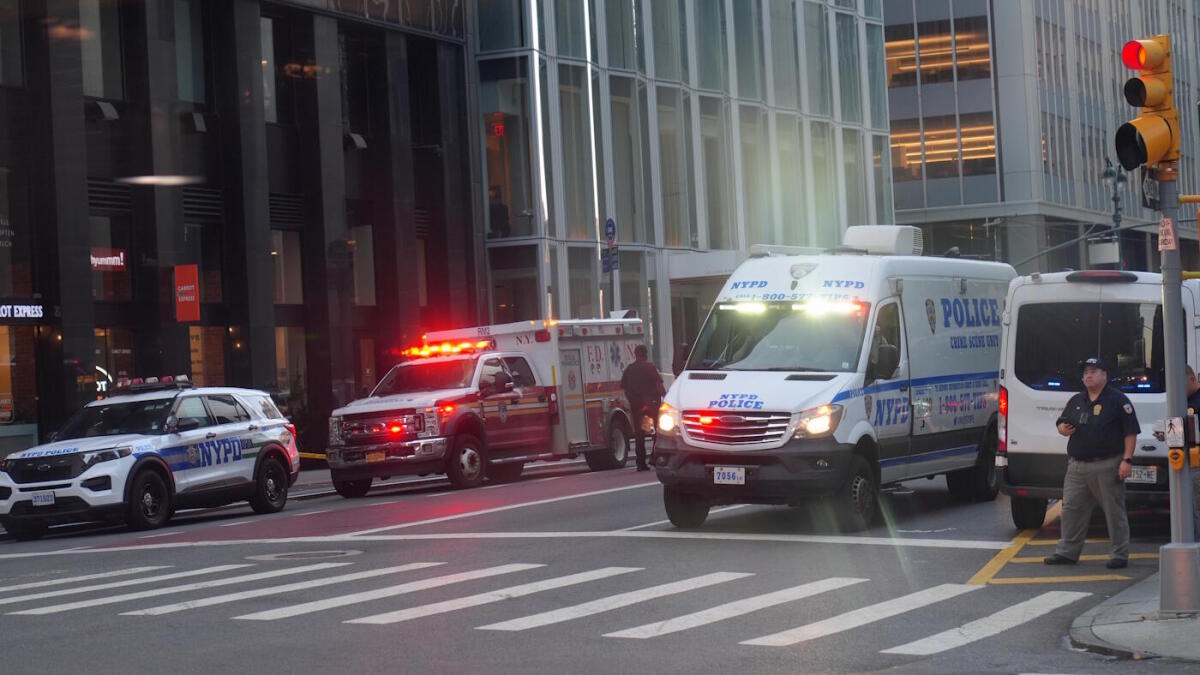Crisis Communication in the Spotlight: Analyzing Roger Goodell’s Response to the NYC Shooting
The Weight of Leadership in Times of Crisis
When tragedy strikes, the world watches how leaders respond. The shooting at the NFL’s New York City headquarters on July 28, 2025, was no exception. This event, which resulted in multiple fatalities and injuries, placed NFL Commissioner Roger Goodell in the crucible of crisis communication. His response would be scrutinized not just by the NFL community, but by the public at large, setting a precedent for how organizations should handle such unimaginable events.
The Immediate Response: A Blueprint for Crisis Communication
Goodell’s initial actions set the tone for the NFL’s response, demonstrating the critical importance of swift, decisive communication in the immediate aftermath of a crisis.
Speed and Accuracy: The First Line of Defense
In the digital age, information spreads rapidly—sometimes inaccurately. Goodell’s decision to communicate directly with NFL employees within hours of the shooting was a masterstroke. This rapid response served multiple purposes:
– Preventing misinformation: By providing official information directly, Goodell cut through the noise of speculation and rumors that often circulate in the wake of such events.
– Establishing control: In moments of chaos, clear communication from leadership helps restore a sense of order and stability.
– Demonstrating accountability: A swift response shows that the organization is taking the situation seriously and is actively engaged in managing the crisis.
Empathy as a Communication Tool
Goodell’s acknowledgment of the “unspeakable act of violence” was more than just a statement—it was a strategic communication choice. This phrasing:
– Validated the emotions of those affected, showing that the NFL understood the gravity of the situation.
– Humanized the response, making it clear that this was not just a corporate crisis, but a deeply personal tragedy for many.
– Set the tone for how the organization would approach the situation moving forward, emphasizing compassion and support.
Prioritizing Safety: Actions Speak Louder Than Words
Goodell’s decision to temporarily close NFL offices was a concrete demonstration of the league’s commitment to employee safety. This action:
– Showed immediate concern for the well-being of staff, which is crucial in maintaining trust during a crisis.
– Provided time and space for a thorough assessment of the situation and implementation of necessary security measures.
– Sent a strong message to both employees and the public that the NFL was taking the threat seriously and was willing to take decisive action.
Transparency: The Delicate Balance Between Information and Privacy
Transparency is a cornerstone of effective crisis communication, but it must be balanced with respect for privacy and sensitivity to the situation.
Direct Communication Channels
By communicating directly with employees, Goodell ensured that:
– Information came from a trusted source, reducing the likelihood of misinformation.
– Employees felt valued and informed, which is crucial for maintaining morale during a crisis.
– The NFL maintained control of the narrative, preventing external sources from shaping the story.
Acknowledging the Impact
Goodell’s acknowledgment of the serious injury to an NFL employee was a delicate but necessary part of the communication strategy. This approach:
– Provided clarity about the extent of the impact on the NFL community.
– Showed respect for the individual’s privacy while still acknowledging their situation.
– Prepared employees for the reality of the situation, helping them process the event more effectively.
Coordination with Authorities
While not explicitly detailed, the implied coordination with law enforcement was a critical aspect of the response. This collaboration:
– Ensured the NFL was operating within legal and safety guidelines.
– Demonstrated a commitment to thorough investigation and accountability.
– Reinforced the message that the NFL was taking the situation seriously and was working with experts to manage it.
Addressing the Underlying Issues: Looking Beyond the Immediate Crisis
While the immediate focus was on safety and communication, the shooting inevitably raised questions about security protocols and long-term support. Goodell’s response, while not explicitly detailed in all areas, implied a comprehensive approach to addressing these concerns.
Security Review: A Proactive Approach
The temporary closure of NFL offices suggested a review of security protocols, which is a standard practice after such events. This review would likely include:
– Assessing vulnerabilities in the current security measures.
– Implementing new protocols to prevent future incidents.
– Conducting training for staff on emergency procedures and safety measures.
Employee Support: The Human Element
Providing support to employees affected by the shooting is essential. While not explicitly mentioned, it is expected that the NFL would offer:
– Counseling services to help employees cope with trauma.
– Grief support for those who lost loved ones or were directly affected.
– Resources for recovery, including mental health support and practical assistance.
Community Outreach: Building Trust and Goodwill
Engaging with the broader community is also important, particularly in a city like New York, where the NFL has a significant presence. This could involve:
– Supporting local charities to demonstrate a commitment to the community.
– Participating in community events to rebuild trust and show solidarity.
– Demonstrating a commitment to the city’s well-being, which can help repair any damage to the NFL’s reputation.
Potential Areas for Improvement: Lessons for Future Crises
While Goodell’s initial response was largely effective, there are areas where the NFL could improve its crisis communication strategy in the future.
Increased Visibility: The Power of Public Leadership
While internal communication was strong, Goodell could have considered a more visible public statement to reassure the broader public and demonstrate leadership. This could have been in the form of:
– A press conference to address the media and the public directly.
– A televised address to reach a wider audience and show the NFL’s commitment to transparency.
– Regular updates to keep the public informed as the situation develops.
Detailed Security Updates: Transparency in Action
Providing more specific details about the security review and any planned changes could help to:
– Alleviate concerns among employees and the public.
– Demonstrate a proactive approach to safety and security.
– Build trust by showing that the NFL is taking concrete steps to prevent future incidents.
Long-Term Support Plan: A Commitment to Employees
Outlining a clear plan for long-term employee support, including counseling services and other resources, could provide employees with:
– A sense of security knowing that the NFL is committed to their well-being.
– Stability during a difficult time, helping them focus on recovery.
– Confidence in the organization’s leadership and its ability to support them through the crisis.
Conclusion: The Measure of Leadership in Crisis
The shooting at the NFL’s New York City headquarters was a tragic event that tested the league’s leadership and communication capabilities. Roger Goodell’s immediate response, characterized by rapid communication, empathy, and a focus on employee safety, was crucial in managing the initial aftermath. By acknowledging the severity of the situation, providing accurate information, and prioritizing the well-being of his employees, Goodell demonstrated effective crisis communication leadership.
However, the incident also highlights the ongoing need for vigilance and preparedness. By continuously reviewing security protocols, providing comprehensive employee support, and maintaining open communication channels, the NFL can better protect its employees and navigate future crises with resilience and strength.
The true measure of leadership in a crisis is not only how one responds in the immediate aftermath but also how one learns and adapts to prevent future tragedies. The NFL’s response to the NYC shooting provides valuable lessons for crisis communication and underscores the importance of preparedness, transparency, and empathy in the face of adversity. In the end, it is these qualities that will define the legacy of this tragic event and the leadership that guided the organization through it.











